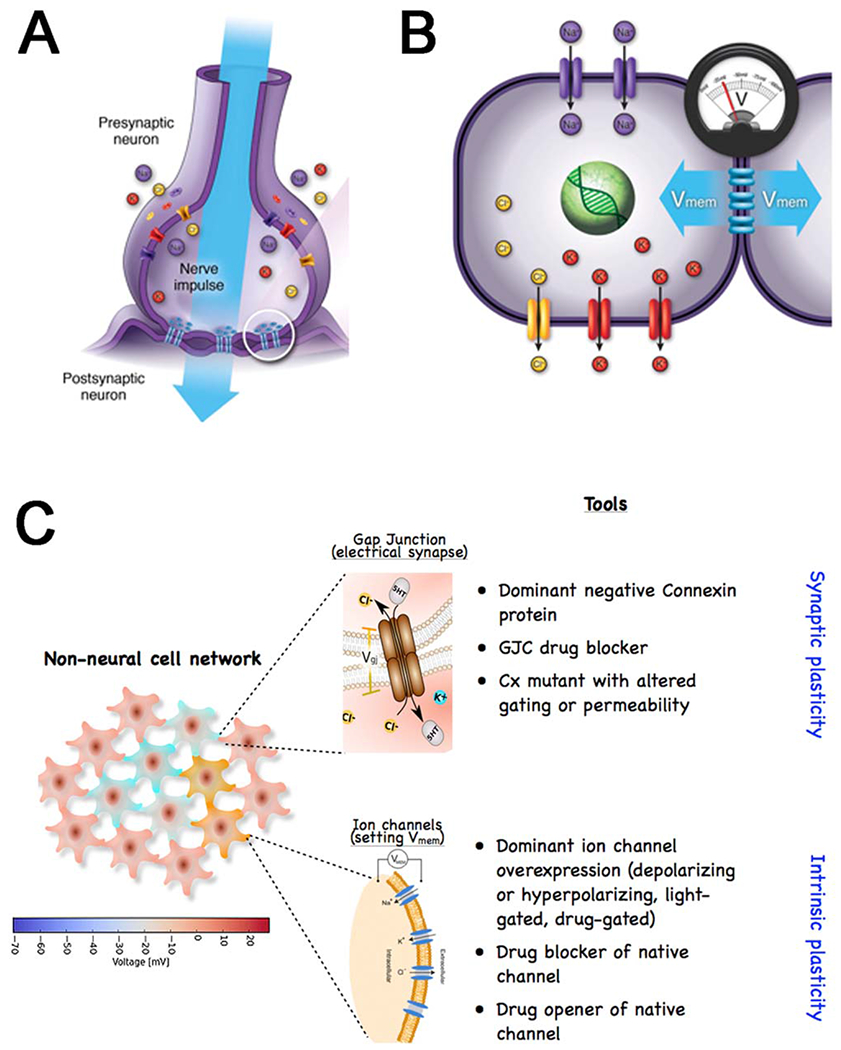Figure 1.

Gap junctions form bioelectric circuits in the brain and beyond. (A) Neurons are often coupled by gap junctions, which allows electrical activity to propagate and integrate across cells. (B) The same scheme, involving ion channels to set Vmem levels and gap junctions to communicate bioelectric state to neighboring cells, is present in most somatic tissues. (C) Non-neural cells assemble into GJ-coupled networks that have many of the properties of neural networks. Manipulating the function of somatic tissues during pattern formation, by modulating GJ activity, makes use of two basic approaches, using pharmacological or genetic techniques to target connectivity (GJ gating, akin to synaptic plasticity) or resting potential (ion channels, akin to intrinsic plasticity). Graphics courtesy of Alexis Pietak and Jeremy Guay.
